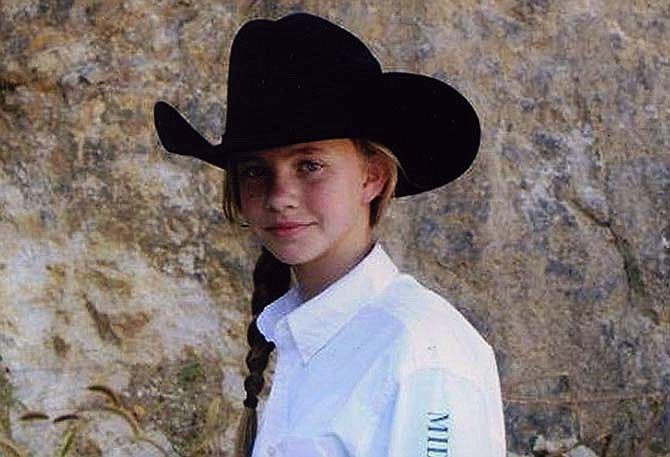As a speech pathologist, Michelle Dampf never expected her career to have such a personal impact on her life outside the workplace.
Years after graduating with her master's degree in speech pathology in 1997, Dampf and her husband, Jeff, have two daughters with hearing impairments in addition to two other children.
Catie, 13, and Ella, 7, were born with nearly complete deafness and received cochlear implants as infants, Dampf said.
"It's very ironic to have a child that's deaf for someone in the field of speech pathology, let alone two. It's very rare," she said.
Dampf's education and career experience have aided in "just being able to understand the special education process and understanding hearing impairments, the jargon and terminology," she said.
The Dampfs learned of Catie's deafness when she was 9 months old. At the time, medical professionals doubted Catie was deaf, but Michelle insisted on hearing tests, which ultimately verified Catie's deafness.
Because the use of hearing aids proved fruitless in helping Catie's hearing, the Dampfs invested in cochlear implants when she was 15 months old.
A cochlear implant is a device that replaces the cochlea of the inner ear. The cochlea naturally translates sounds from waves into electrical signals that the auditory nerve sends to the brain. With the complete replacement of the cochlea, individuals with hearing impairments will suffer the loss of any hearing ability they may possess prior to the surgery.
In addition to the surgically installed inner ear components of the device, another part is worn above the ear and is kept in place with a magnet.
Because of the risk of the surgery and the loss of all hearing ability, the Dampfs researched cochlear implants heavily and spoke with doctors and parents of children who had been implanted with the devices, Dampf said.
"It was not a decision we took lightly at all. It's not a one-size-fits-all. Just because it was right for our family, that doesn't mean it's right for every family," she said.
When Ella was born, she underwent infant hearing screenings that confirmed her deafness, too, Dampf said.
Despite the familiarity in caring for a deaf infant, the process was "harder the second time," Dampf said.
"I knew the challenges Ella was going to have to go through," she said.
Though Dampf initially disliked the thought of an infant undergoing a surgical operation, she believes implanting her daughters earlier augmented their ability to comprehend and use language later in life, she said.
"If you implant after three (years of age), it will work, but it's better earlier. The most important part of their success is early intervention," she said.
In addition to receiving implants at an early age, both Catie and Ella underwent extensive speech therapy at the former Moog Center for Deaf Education in Columbia before attending kindergarten at Blair Oaks, Dampf said.
"They had to learn how to listen. They had missed out on almost a year of hearing before they got the implants. It's what you do with (the implants) that makes all the difference," she said.
Though the Dampfs began to teach Catie sign language early on, they discontinued because the cochlear implants combined with therapy enhanced Catie's hearing and comprehension to nearly those of a hearing person.
But Catie has expressed interest in learning sign language as a second language, Dampf said.
"We're not trying to keep them separated, but their world is all hearing," Dampf said.
In addition to the obstacle of obtaining insurance coverage for the cochlear implants, Dampf said the most formidable difficulty has been "worry for their future, not knowing what limitations they will have."
"The cochlear implants made me feel better," she said.
An eighth-grader at Blair Oaks, Catie has achieved a status on the A honor roll and a role in the Mid Missouri Bit & Bridle Drill Team with the aid of her cochlear implants.
Without the implants, "I wouldn't be able to do a lot of the things I do," she said.
For many years, Michelle Dampf has admired her daughter's moxie and ambition. As a third grader, Catie sang Sara Evans' "Suds in the Bucket" for her elementary school, a performance that impressed Michelle.
"To me, it was phenomenal that she had the courage and confidence to do that," Michelle said.
In addition to singing, Catie also pursues horseback riding as a hobby. She began riding at age 3 and participates in local horse shows, as well as the Mid Missouri Bit & Bridle Drill Team, which performs the national anthem for local horse shows and competes with other drill teams in Arkansas and Oklahoma.
"We have fun no matter what we're doing," Catie said of the drill team.
Despite the enjoyment Catie receives from horseback riding, the hobby has also presented her with hardships, she said.
In a horseback riding accident that occurred in 2007, Catie fell from her horse and broke her femur,.
In an essay concerning her greatest challenge in life, Michelle was surprised to read Catie's writing on recuperating from her horse accident, Michelle said.
"For her, it was recovering from the horse accident and getting back to riding, not deafness and all the therapies," Michelle said.
In spite of the hurdles Catie has encountered, she retains a positive outlook on life.
"I know it (horseback riding) is a real big blessing. I realize what I do have and appreciate it," she said.

